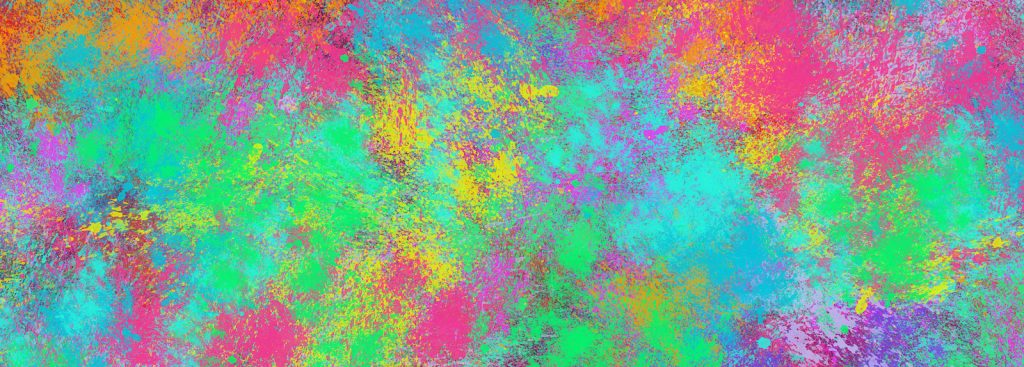
Neon colors, often called fluorescent colors, are impossible to miss. Commonly seen in signs, nail polish, and clothes from the ’80s, these vibrant colors have gone through many trends in history.
Yet, they’ve only been around for the past century, and they’re certainly not the kind of colors you would find in nature. So, their history is just as unique and colorful as the colors themselves.
What are Neon Colors?
According to Merriam-Webster, as a noun, neon is defined as a nonmetallic that is found in small amounts of air, commonly used in electric lamps and lasers. However, as an adjective, it’s “extremely bright,” which is the definition most people are familiar with.
Neon Colors vs. Fluorescent Colors
Neon and fluorescent are often used to describe the same colors, but they have unique meanings from each other. Neon lights and fluorescent lights are made slightly differently. Neon lights use noble gases while fluorescent lights use mercury vapor, which is not a noble gas.
Fluorescent lights are also made to protect humans’ eyes from UV radiation, while neon lights aren’t. Neon lights are often associated with a wide range of bright colors too, while fluorescent lights are usually just bright white. So, both terms are used to describe bright colors of lights, but in technical terms, they’re not interchangeable.
Are Neon Colors on the Color Wheel?

Neon colors aren’t seen on most color wheels because they’re just very bright versions of the primary and secondary colors on the color wheel. It’s also difficult to show neon color in print since they appear most commonly in lights. Neon colors need specialist pigments to appear on print.
Types of Neon Colors
In terms of science, the gas element called neon only produces a reddish-orange color. Yet, the word “neon” can be used to describe a wide range of ultra-bright hues.
Here are the main neon colors, along with their common names and hex codes:
Green
- Neon Green | Hexadecimal Code: #39FF14
- UFO Green | Hexadecimal Code: #7FFF00
- Electric Lime | Hexadecimal Code: #CCFF00
Red
- Neon Red | Hexadecimal Code: #FF3131
- Electric Orange | Hexadecimal Code: #FF5E00
Yellow
- Neon Yellow | Hexadecimal Code: #FFF01F
- Absinthe | Hexadecimal Code: #E7EE4F
- Chartreuse Yellow | Hexadecimal Code: #DFFF00
Pink
- Neon Pink | Hexadecimal Code: #FF44CC
- Neon Magenta | Hexadecimal Code: #EA00FF
- Plastic Pink | Hexadecimal Code: #FF1493
Purple
- Neon Purple | Hexadecimal Code: #BC13FE
- Proton Purple | Hexadecimal Code: #8A2BE2
Blue
- Neon Blue | Hexadecimal Code: #1F51FF
- Electric Cyan | Hexadecimal Code: #0FF0FC
Like primary and secondary colors, neon colors have complementary colors too. For example, neon blue and electric orange complement each other, just like regular blue and orange do. The same is true for neon yellow and neon purple.
Neon Color Meanings
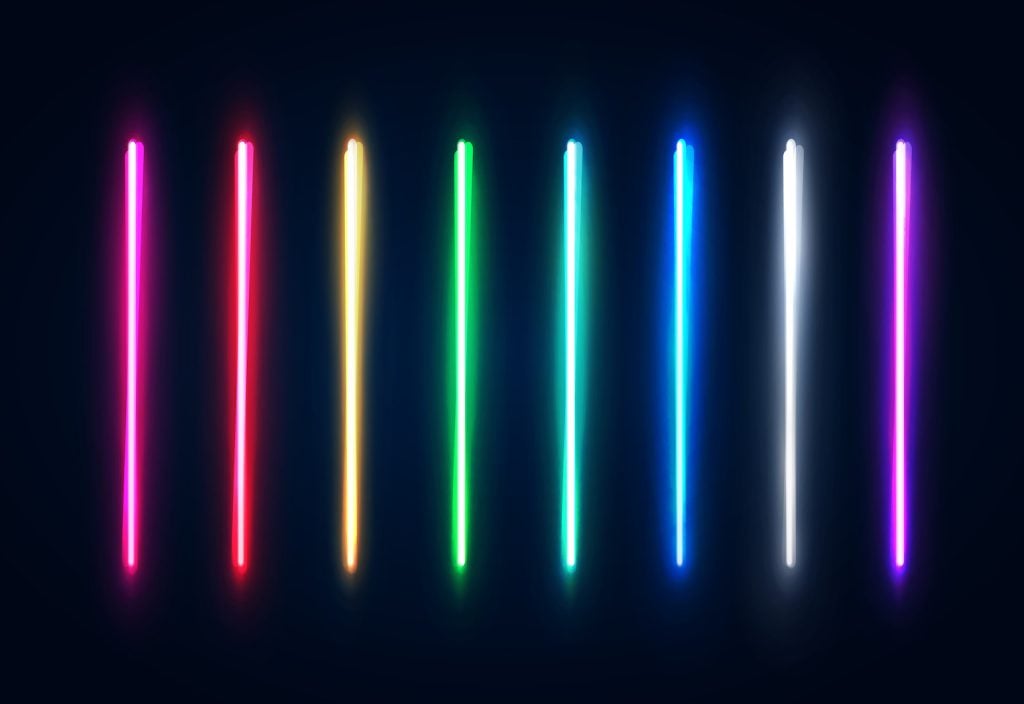
Like all colors, neon colors can have some meaning to them. However, most neon variants share similar meanings to the less vibrant colors they came from.
A good example is neon blue. This color often means calm and tranquil like most shades of blue. Also, neon pink shares the loving and playful meanings of normal pink too.
On the other hand, not everyone sees neon colors as having ordinary meanings. In some cases, all neon colors share the same meanings. People often perceive neons as fun, excessive, and frivolous, often linking them to clubs and nightlife as well. These meanings are especially true if the neon colors are beside darker colors, such as black or navy blue.
In some cases, neon colors are used to represent danger or warnings. For this reason, some signs and clothing have neon trimming to make them highly visible at night.
Who Invented Neon?
Neon colors made their first appearance in the form of lights in 1910. However, the process of creating “neon” started in the mid-1800s when Heinrich Geissler created sealed glass tubes with electrical currents, which caused the gases inside to glow vibrant colors.
Then, in 1898, scientists Sir William Ramsay and Morris Travers found a way to liquefy air and separate it into multiple parts. Only 12 years later, engineer Georges Claude made a lamp out of a tube of neon glass, causing him to be labeled as the official inventor of “neon.” Claude later sold and distributed these tubes, which helped create neon signs.
Yet, neon colors have expanded in so many ways since then, eventually moving on to car lights, artwork, posters, and clothes.
History of Neon Signs

Neon signs are likely the most prevalent type of neon. These signs light up busy streets and make ideal advertisements. Yet, they’ve been a part of this world even before electricity. The idea first began back in 1675, when Jean Picard, an astronomer, discovered a glow in a mercury barometer tube.
Picard couldn’t comprehend the cause of the light at the time, but with that discovery, scientists were able to do enough research to develop their own lighting, eventually leading to neon lights.
After the work of Heinrich Geissler, Sir William Ramsey, and Morris Travers, Georges Claude was able to create the first neon lamp. He chose the name neon because it was related to the term “neos,” which roughly translated to “the new gas.”
By 1923, Claude brought neon gas signs to the United States through his company called Claude Neon. Earle C. Anthony bought the first two signs for his Packard car dealership. The signs cost him $24,000.
Yet, once those pricey signs became visible to the public, everyone wanted them. Soon, more and more companies put up neon lights to draw attention to their businesses.
How are Neon Signs Made?
Neon light signs are made using hollow glass tubes, which usually come in varying lengths of four, five, and eight feet. The tubes are shaped by adding heat through lit gas and forced air. Using different angles and curves, the tubes can be shaped and cut into proper shapes and letters.
Depending on the country, the tubes have to go through certain processes before they can be used as neon signs. These processes usually consist of evacuating some of the air and then charging it with a high voltage current. It must be filled with the proper amount of argon or neon as well.
While neon gas produces a red color, there are now over 150 colors that can be used. Any color that’s not red can be made using elements like mercury, argon, and phosphor. So, while not all neon lights include the neon element, “neon tubes” simply mean any positive-column discharge lamps, no matter what the tubes are filled with.
What Colors Do Noble Gases Make?
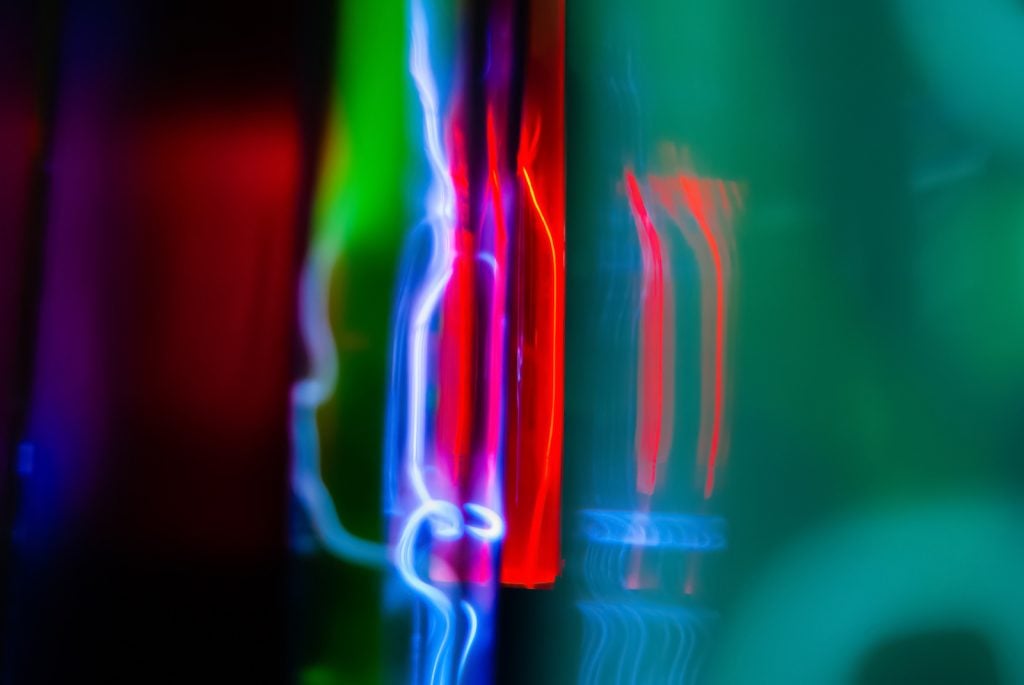
Since different noble gases can make different bright colors in light, not all signs are the same. Various combinations of gases can be used to make a wide range of colors.
Here are some noble gases commonly used to make colors:
- Neon – Red, orange
- Argon – Violet, pale blue
- Helium – Orange, white, pink, red
- Krypton – Off-white, green, yellow
- Xenon – Gray, blue, green, off-white
Another gas that has been used is radon, which creates a yellow glow. However, it’s not used in modern technology because it’s highly radioactive.
Timeline of Neon Color History

As styles and trends change and evolve, so do colors. Neon colors have gone through many different changes in history, which led them to be popular today. Here’s a breakdown of what happened to neon colors during different time periods.
Mid-1800s
Heinrich Geissler, who was a glassblower and physicist in Germany, learned how to seal glass tubes with two electrodes inside. Those electrodes caused an electric current to make the gases inside the tube glow. This discovery led to the beginning of neon lighting.
1898
The term “neon” was used for the first time. Sir William Ramsay and Morris Travers were British scientists who discovered how to liquefy air and separate it into different parts. They ended up calling one of the parts “neon.”
1910
This year marked the introduction of neon. French engineer Georges Claude used an electrified tube of neon glass to make a lamp, which was the first of its kind.
1915
After successfully creating the neon tubes, Claude sold some to companies in the United States. The first to buy a neon tube was the Packard car dealership in Los Angeles.
1950s
Artkraft Strauss, a sign design company in New York, began presenting neon signs all over Times Square. Many of these signs were auctioned off in 2006 after they were no longer in use, and they gathered over $100,000 in revenue.
1960s
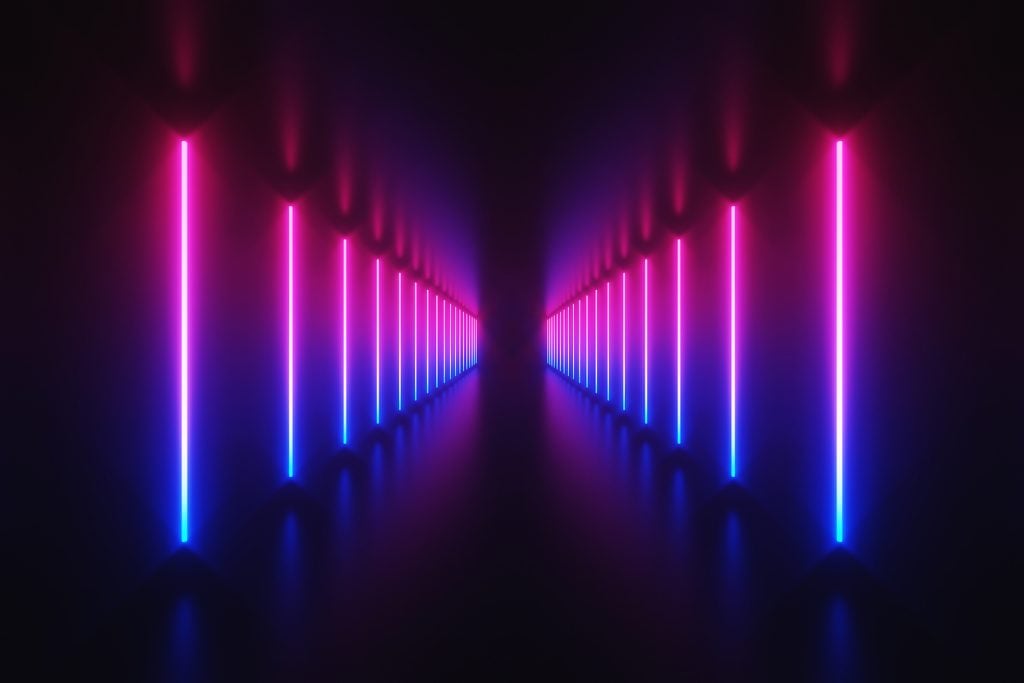
Neon colors were introduced into art after Andy Warhol painted a pink neon cow with a bright yellow background. Warhol described neon as one of the greatest modern things at the time.
Artist Keith Sommers later created pieces using lit-up neon sculptures. He has many famous public commissions, including a permanent installation at the New International Airport in Munich. Many other artists followed this neon light style later, and some still use it in the present day.
1980s
Neon colors made their way into pop culture, especially in clothing and accessories. Shirts, bows, makeup, and shoes all started coming out in neon colors to keep up with the trends.
1990s
While glow sticks had been around since the 1960s, they quickly became popular accessories at parties in the 90s.
2007
2007 was the last major year for all things neon. Reebok created a pair of neon shoes, which glowed in the dark. Yet, the trend didn’t last long.
Fashion shows also incorporated more neon colors, including neon-colored hair and makeup on their models.
Today
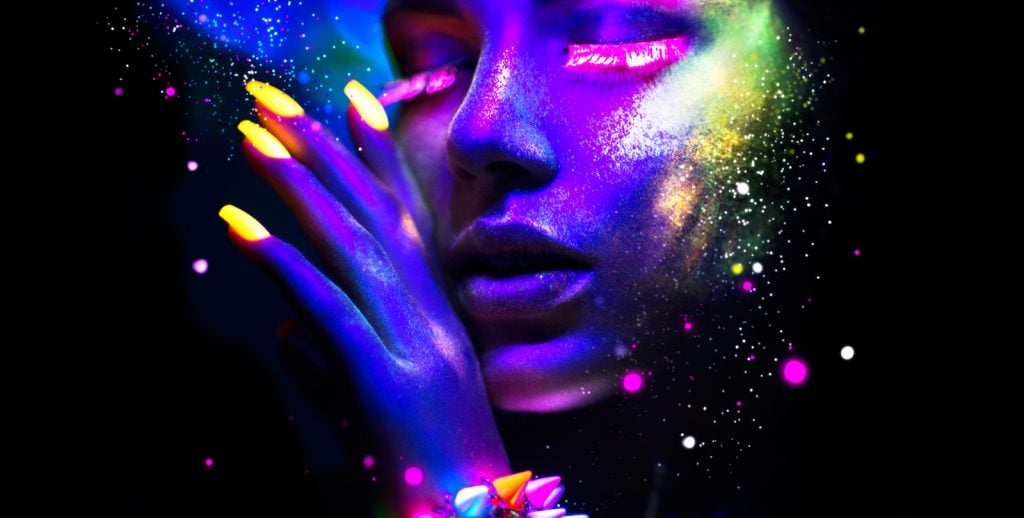
Neon colors might not be as trendy as they were in the 1980s, but they come in all types of shapes and forms. Neon clothing, nail polish, makeup, hair dye, and glow sticks are all still around to this day.
These vibrant colors might not be the norm when it comes to style anymore, but they can sure help someone stand out in a crowd.
Should You Design with Neon Colors?
Even though neon has faded out of style in recent years, it can still be beneficial to use it in some designs, as long as the amount of neon isn’t overwhelming. Many companies will use neon colors in their advertising to draw the viewer’s eye to a point of focus in the design. To maximize effect, everything else needs to be duller, simpler colors that contrast the neon colors.
Pops of neon on signs, advertisements, art, and even furnishings can be beneficial, as long as it’s used sparingly. Too much neon can be distracting and unpleasant to the eyes. Yet, bits of neon here and there can create exciting and attention-grabbing pieces. So, whether or not neon colors are trendy, they will always be a key part of designs.
Read Next: 30 Neon Color Palettes for Vibrant Designs



